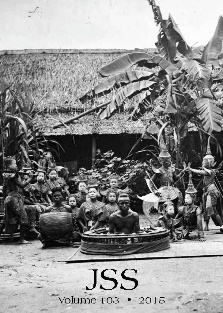Integrating the Phong Tuek Viṣṇu: The Archaeology and Art History of a Forgotten Image
Main Article Content
Abstract
This paper situates the Phong Tuek Viṣṇu, a lesser-known Dvāravatī sculpture from western Thailand, in its archaeological and art historical context in order to demonstrate 7th to 8th century artistic and political connections across mainland Southeast Asia. The circumstances of the Viṣṇu’s rediscovery in the early 1950s, as well as its subsequent “restoration” and preservation at Wat Dong Sak, are examined through reappraisal of documentary evidence, new field reconnaissance, interviews of local residents, and systematic examination of the sculpture itself. Detailed stylistic analysis and conjectural reconstruction of the sculpture’s original appearance place the image within the broader development of the mitred Viṣṇu iconographic type known from sites throughout Southeast Asia. With particular emphasis on the details of the headdress and garment, specific comparisons are made to related sculpture from Thailand, Arakan (Myanmar), Preangkorian Cambodia, and the Cham civilization of Vietnam. The Phong Tuek Viṣṇu’s idiosyncratic features and geographically dispersed stylistic relationships suggest a probable early 8th century date following the mid-to-late 7th century expansion of Khmer elites out of the Kampong Thom area of Cambodia. The Phong Tuek Viṣṇu, therefore, provides valuable testimony of a particularly intense period of interactions spanning mainland Southeast Asia from Arakan in the west to central Vietnam in the east.


